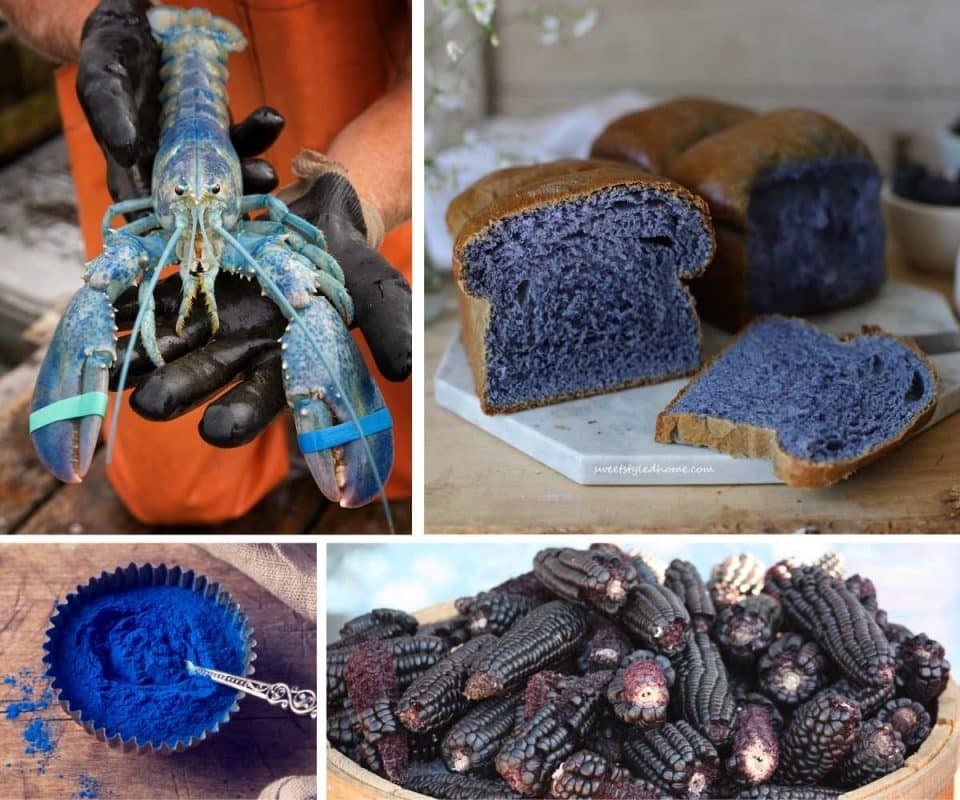A touch of black can transform an ordinary dish into something visually striking and intriguing. Incorporating black ingredients creates beautiful contrasts with lighter-colored foods, adding both visual appeal and depth of flavor to your culinary creations.
Often sought after for their unique color and nutritional benefits, here are 25 of our favorite naturally Black Foods from around the globe to inspire your next meal.
1. Black Sesame Seeds
Black sesame seeds are a cornerstone in Middle Eastern and Asian cuisines. While often used sparingly in Western countries, mainly as a topping for bread, their culinary appeal is rapidly growing. Top chefs are increasingly incorporating them into innovative dishes, such as sesame-crusted tuna, highlighting their versatility.
These ebony seeds offer a more pronounced nutty flavor and a slightly chewier texture compared to white sesame seeds, making them a delightful addition to both savory and sweet recipes.
2. Black Beans: Turtle Beans of the Americas
With their sleek, black exterior and pale interior, black beans bring visual drama to any dish. These legumes are a variety of kidney bean, enjoyed globally, with particular popularity in South and Central American cuisines. In the Southern United States, they are a fundamental ingredient in Cajun and Creole cooking.
You might also encounter them under names like turtle beans, caviar criollo, or frijoles negros, reflecting their widespread appreciation across different cultures.
3. Black Garlic: Fermented Flavor Bomb
Black garlic begins as regular garlic, but undergoes a fascinating aging process of up to 60 days. This fermentation transforms the cloves, giving them a striking black hue, a naturally sweet taste, and a subtly sticky texture.
While deeply rooted in Thai and various Asian culinary traditions, black garlic’s applications are incredibly diverse. It can elevate stir-fries, enrich soups, be mashed into pasta sauces, and much more, adding a unique umami depth.
4. Black Rice: Forbidden Rice Unveiled
Black rice encompasses several medium-grain rice varieties originating from Indonesia, the Philippines, and Thailand. Its history stretches back over 10,000 years, and today, it’s accessible worldwide, prized for its nutritional value and visual appeal as a naturally black food.
Although the grains appear black in their raw state, cooking reveals a beautiful deep purple color, adding an elegant touch to any meal.
5. Black Mission Figs: Sweet Jewels of Summer
The delicate purple-black skin of Black Mission figs encloses a luscious, dark pink interior. When perfectly ripe, these figs can surpass honey in sweetness, offering an intensely sugary and delightful experience. They are also packed with beneficial antioxidants and essential minerals.
Figs are incredibly versatile fruits, seamlessly transitioning from savory to sweet dishes. They are excellent for creating jellies, jams, and chutneys, though these preparations might diminish their distinctive black color. For visual impact, use them fresh as a stunning garnish.
6. Blackberries: Wild and Wonderful
Blackberries, the quintessential late summer fruit, often grow wild in hedgerows, offering a foraged delight. Their balance of sweetness and tartness makes them a fantastic addition to cakes, puddings, cocktails, and jellies. They can even bring an unexpected twist to salads.
Rich in vitamins, blackberries are also considered a natural remedy to boost recovery after colds or flu, adding health benefits to their delicious flavor profile as naturally black foods.
7. Edible Black Fungus Mushrooms: Wood Ear Wonders
These uniquely shaped, crumpled mushrooms are frequently used in Asian-inspired cuisines, especially in stews and stir-fries. Beyond their culinary applications, they are celebrated for their nutritional value, being a good source of fiber, B vitamins, minerals, and protein. Often labeled as wood ear mushrooms, they offer a distinctive texture and earthy flavor to dishes.
8. Black Velvet Tamarind: Sweet and Sour Exotic Fruit
Each tamarind fruit pod contains one or two large, flat, black-brown seeds encased in a shiny shell. The pulp of the black velvet tamarind can be enjoyed raw or soaked in water to create a refreshing beverage.
Interestingly, the bitter leaves of the tamarind tree are used in Domoda, a traditional and flavorful Ghanaian dish, showcasing the diverse culinary uses of this plant.
9. Black Olives: Mediterranean Staple
A cornerstone of Mediterranean cuisine, glossy black olives with their wrinkled skins are incredibly versatile. While they make a healthy and flavorful snack on their own, they are also essential ingredients in beloved classics like pizza, tapenades, risottos, and countless other recipes.
A surprising fact: green and black olives are the same fruit. The curing process is what differentiates them and creates the distinctive dark color of black olives, making them a naturally black food through processing.
10. Black Seaweed Pearls: Vegan Caviar
Photo Credit: @nordicveganfoodie
Black seaweed is frequently found in the form of glistening black, salty pearls. Resembling fish egg caviar, these pearls are entirely plant-based, making them a perfect choice for vegetarians and vegans seeking naturally black foods. These shimmering pearls boast a lower carbon footprint than traditional caviar and are significantly more affordable.
Black seaweed eggs are typically served cold as an elegant topping for canapés or luxurious sandwiches. They can also be incorporated into exciting dips and hot sauces, adding a unique oceanic flavor.
11. Black Corn: Heritage Grain with a Twist
If you enjoy corn on the cob but seek something beyond the standard yellow variety, black corn offers a striking alternative. These glossy black kernels possess an attractive purplish hue that deepens as the corn matures. Be mindful, as it can stain your fingers with its intense color. The texture is chewier, and the flavor is less sweet than typical yellow corn.
While less common outside of South America, you might find black corn in farmers’ markets, often sold as a heritage variety, offering a taste of culinary history.
12. Black Tomatoes: Heirloom Flavor and Color
Numerous varieties of black tomatoes exist, displaying skin tones ranging from deep reddish-brown to midnight black. ‘Black Beauty’ is particularly celebrated among these for its exceptional qualities as a naturally black food.
These medium-sized tomatoes are prized for both their rich flavor and their captivating appearance. Use them to introduce a surprising and delicious element to salads, sandwiches, pizza toppings, and virtually any dish where you would typically use tomatoes.
13. Black Carrots: Sweet and Spicy Root
Black carrots offer a surprisingly sweet taste with a subtly spicy aftertaste. They are frequently used in Asian cuisines but are also becoming increasingly available in specialty shops and farmers’ markets in other regions. While their outer skin is black, their inner flesh is often paler, creating a visually appealing contrast when sliced in salads.
14. Black Pansies: Edible Floral Garnishes
Black pansies serve as exquisite edible garnishes and are a favorite in Michelin-starred kitchens worldwide. They can also be transformed into delicate and flavorful jellies.
Although relatively easy to cultivate at home and typically sprouting within a couple of weeks, the petals may appear more dark purple than a true black. To explore more about edible flowers, you can consult guides dedicated to their culinary use.
15. Black Grapes: Deep Purple Delight
While technically more of a deep purple than pure black, black grapes offer a rich color contrast in mixed fruit salads or on cheese boards. Their dark skin adds visual interest and nutritional value.
Low in calories and nutrient-dense, black grapes rightfully earn their place on any list of naturally black foods, offering both taste and health benefits.
16. Blackcurrants: Tart Berries for Culinary Creations
With their distinctive tart flavor, juicy blackcurrants are often paired with sweeter ingredients to create delectable jams, compotes, and syrups.
They also complement apples and other sweet fruits beautifully in crumbles and pies. These naturally black fruits offer a subtle acidity that pairs wonderfully with rich meats like pork, venison, and duck, adding depth to savory dishes as well.
17. Black Sapote: Chocolate Pudding Fruit Illusion
Black sapote is a unique variety of persimmon, sometimes playfully called chocolate pudding fruit, black soapapple, or zapote prieto. Despite its “chocolate pudding fruit” nickname, its flavor doesn’t actually resemble chocolate. Instead, you’ll detect notes of honey, caramel, and dates, offering a complex sweetness.
It reaches its peak flavor when ripe and slightly soft, which might explain its less frequent appearance on typical supermarket shelves.
18. Eggplant: Glossy Purple-Black Vegetable
What’s more visually appealing than a large, glossy eggplant? This versatile vegetable, with its naturally black skin, can be incorporated into numerous soups and stews, providing a striking color contrast against brighter ingredients.
The pulp of the eggplant is also the base for baba ganoush, a delicious and smoky Middle Eastern dip that showcases its unique flavor and texture.
19. Black Lentils: Beluga of the Legume World
These tiny, jet-black pearls retain their intense color even after cooking. Unlike red or green lentils, black lentils maintain their shape and don’t become mushy. This characteristic might be why they are often referred to as beluga lentils, drawing a comparison to shiny black caviar due to their appearance as naturally black foods.
They can be used in the same versatile ways as other lentils, offering a similar nutritional profile and a visually sophisticated touch to dishes.
20. Black Quinoa: Nutty and Vibrant Grain
Black quinoa offers a sweeter and nuttier flavor compared to lighter quinoa varieties. Importantly, it retains its dramatic black color when cooked, maintaining its visual appeal in dishes. Incorporate it into stews, casseroles, and vegetarian recipes for a nutritious and satisfying meal with a visually striking element as a naturally black food.
21. Black Spaghetti: Ink-Infused Pasta
Black spaghetti owes its distinctive color to squid ink, which is mixed directly into fresh pasta dough. This natural ingredient not only turns the pasta black or sometimes a deep midnight blue but also imparts a subtle hint of saltiness.
This slight salinity makes black spaghetti an ideal base for seafood or fish-based recipes, enhancing the oceanic flavors with its unique character.
22. Chocolate: Dark and Intense Indulgence
While not all chocolate is black, for a truly dramatic visual impact, especially when grated over homemade vanilla ice cream, opt for a brand with 100% cocoa solids.
The intense, sugar-free bitterness of very dark chocolate creates a thrilling contrast to the sweetness of desserts, providing a sophisticated flavor experience.
23. Vanilla: Black Specks of Flavor
The tiny black seeds from a fresh vanilla pod elevate homemade ice cream to a gourmet level. Simply split the pod open, scrape out the seeds and pulp, and add them to your dish.
Don’t discard the used vanilla pod! Place it in a jar of sugar to infuse it with the delightful fragrance of vanilla, creating a wonderfully aromatic gift or a pantry staple for baking.
24. Mulberries: Sweet-Sour Berry Delight
Beyond making excellent jellies and jams, sweet-sour mulberries are fantastic additions to granola, smoothies, and trail mix, bringing a burst of flavor and natural color as naturally black foods.
They also provide a welcome balance of flavor when incorporated into sugary puddings, cutting through the sweetness with their unique tartness.
25. Elderberries: Tiny Dark Berries with History
Tiny, dark elderberries have been used for millennia in traditional medicine and are reputed to possess a wide range of curative properties. Too tart to be eaten raw, they are delicious when added to puddings and smoothies. They are also commonly used to make flavorful and light wines.
Related: 19 Stunning Blue Foods
 Collage of Blue Foods
Collage of Blue Foods
Related: Add These 21 Green Foods to Your Diet
Related: Naturally Yellow Foods
